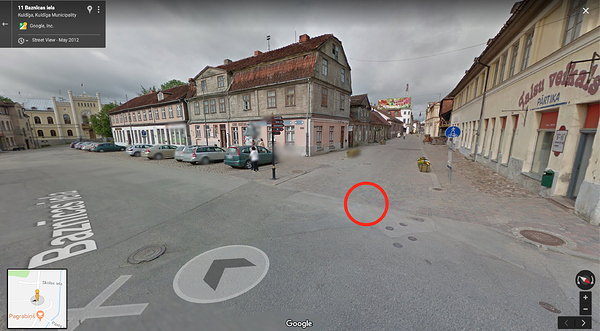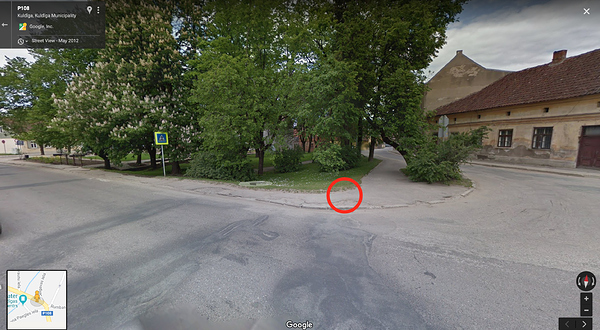Today I had a wonderful opportunity to compare different GNSS receivers with Emlid Reach RS+. We the colleagues from http://lmb.lv we were measuring 3 points in the city environment with following antennas:
- Leica GS18
- Leica GPS900
- Altus NR3
- Altus NR2
- Trimble R4
- Emlid Reach RS+
Measuring setup was as following: RTK with LatPOS network, 10 sec measurement of each point in FIX, handheld pole (2 m).
The results were really good. Almost all of the receivers showed 2 cm accuracy (standard for cadaster measurement in Latvia). Here is the list of deviations from the measurements of the same points, which were found in the local geodetic network.
Point 9058:
Point is in a small well, located very close to the building. With Emlid it was really hard to get FIX here, but after a small walk initialization was found and everything went well.
Results of the measurements (deviations in meters):
dx dy dz
Leica GPS900 -0,033 -0,018 0,006
Emlid Reach RS+ 0,016 -0,002 0,006
Altus NR3 -0,014 0,006 -0,006
Leica GS18 0,001 -0,007 0,007
Trimble R4 could not acquire FIX
Altus NR2 -0,001 -0,013 0,013
Point 5222:
Point is a geodetic sign. Quite good observation of the sky. FIX status was acquired in 1.5-2 minutes. All other receivers acquired FIX in ~15-20 seconds. I think, it is because of L1+L2 receivers.
Results:
Leica GPS900 0,003 -0,004 -0,038
Emlid Reach RS+ 0,003 0 -0,038
Altus NR3 0,003 -0,001 -0,051
Leica GS18 -0,004 0,004 -0,031
Trimble R4 -0,003 0,001 -0,042
Altus NR2 -0,006 0,005 -0,029
Point 5198:
FIX status was acquired in 20 seconds. I had to experiment with different configurations (Fix-and-hold and Continuous), as well as with different networks in LatPOS system (NETW-iMAX and Virtual RS).
Results:
Leica GPS900 0,005 -0,001 -0,038
Emlid Reach RS+ 0,005 -0,009 -0,038
Altus NR3 0,013 -0,009 -0,044
Leica GS18 0,008 -0,008 -0,051
Trimble R4 -0,003 -0,002 0,015
Altus NR2 0,01 -0,006 -0,046
Overall, I am more than happy with the results. I have to admit, that local NTRIP base station was very near to the receivers, so that’s why everyone have good centimetre level accuracy. I will need to conduct the same experiment, but with the points, that are far from the local NTRIP stations.







